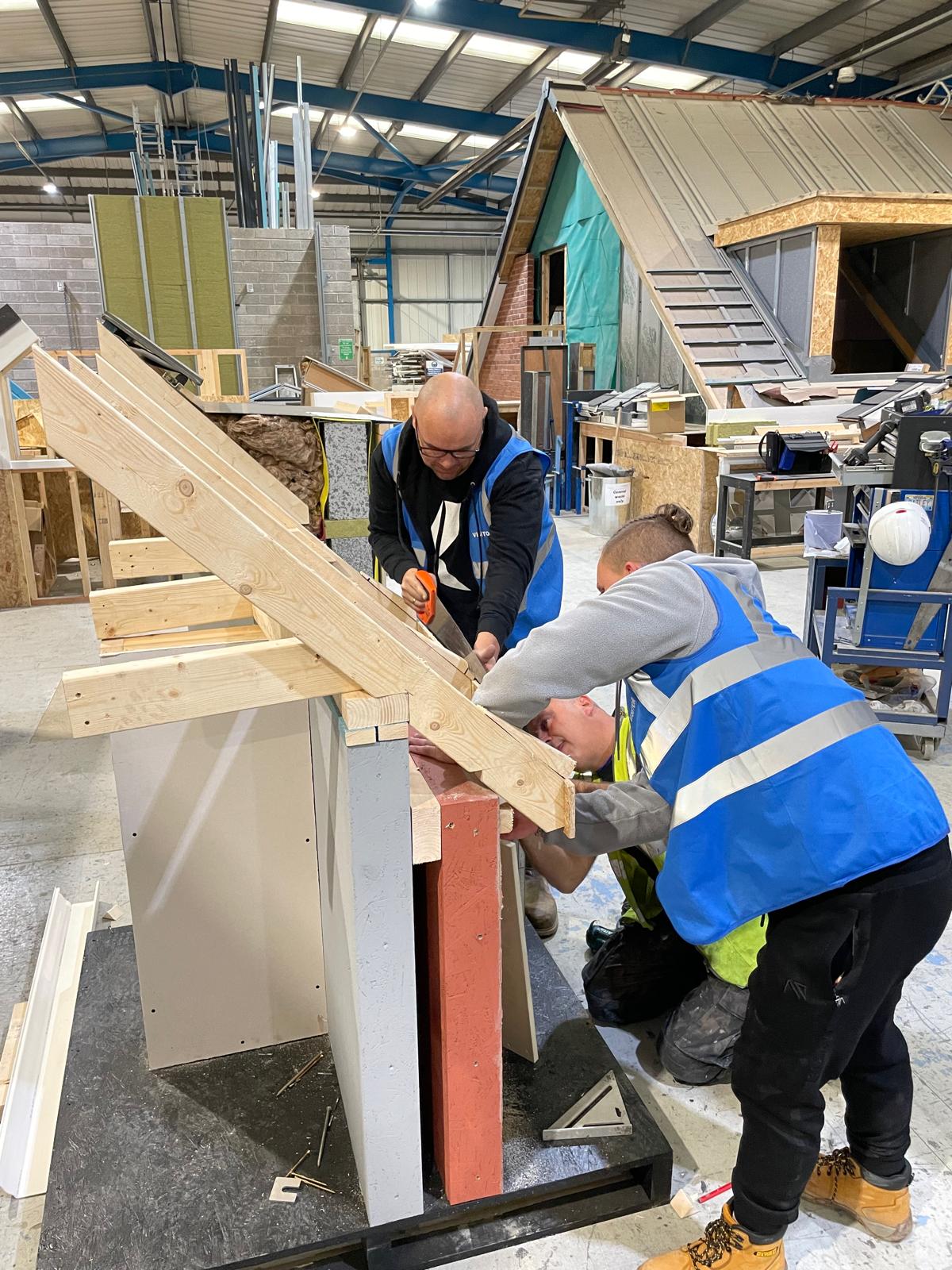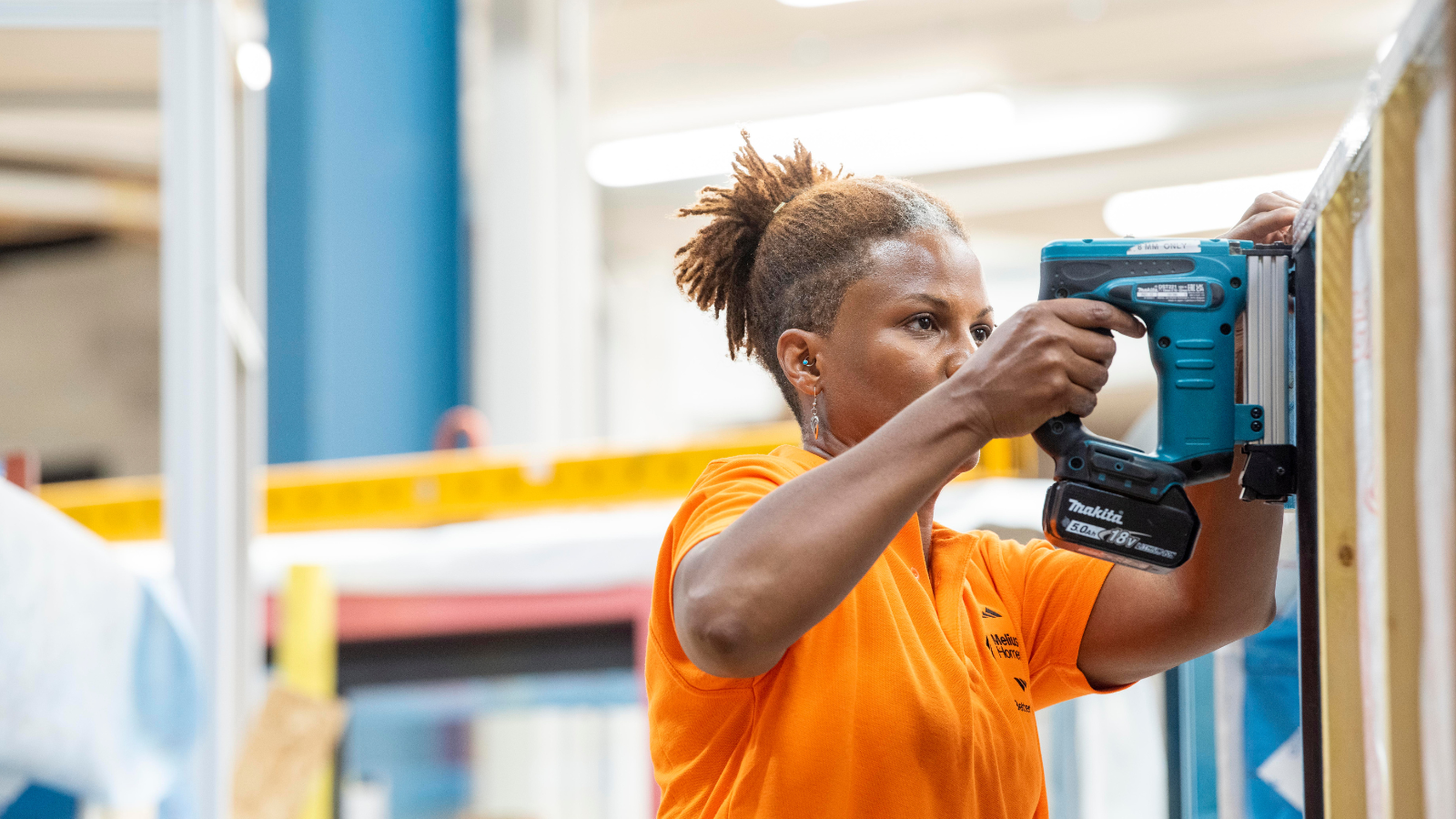As the UK tackles the monumental challenge of decarbonising its ageing housing stock, traditional construction methods simply won’t cut it. The answer lies not in working harder, but in working smarter - and that’s where manufacturing-led retrofit comes in.
This concept is essential to our Innovate UK funded Transform-ER project, which is pioneering a radically new approach to retrofit - one that is financeable, scalable, industrialised and resident-focused.
This blog outlines how the foundational principles for this - which were developed through the Transforming Construction Challenge (TCC), a UKRI-funded programme that ran from 2018 to 2023 - and how they can be applied to retrofit at scale.
This includes adoption of ‘platforms’, systems engineering, and interoperable kits-of-parts - key principles that, while pioneered for new builds, are now essential for the retrofit revolution.
.jpg)
A “platform” in manufacturing isn’t just a digital service or software hub - it's a strategic framework that combines repeatable components with configurable elements to enable mass customisation. Think Lego for construction.
At its core, a product platform includes:
• Common assets (e.g. kits-of-parts, tools, knowledge)
• Stable interfaces that allow interchangeable components to connect
• Rules and standards to govern how everything integrates
This approach enables the development of product families - flexible solutions tailored to specific needs without sacrificing efficiency, quality, or scalability.
In retrofit, this means manufacturers can develop interoperable products for energy efficiency upgrades (in line with PAS 2030 and 2035), while benefiting from economies of scale. The result? A retrofit industry that is faster, safer, and far more productive.
Traditionally used in aerospace and automotive industries, systems engineering is about understanding the whole as more than the sum of its parts. Applied to whole-house retrofits, it treats the home as an integrated system - where insulation, HVAC, windows, and controls must work together to achieve comfort, efficiency, and sustainability.
The benefits of applying it in retrofit include:
• Holistic energy savings
• Optimised lifecycle performance
• Interoperability of components
• Informed decision-making via digital tools
• Risk mitigation and quality assurance
• Scalable retrofit pipelines
As the Institution of Civil Engineers noted in PAS 2080 guidance, “systems thinking” is essential for aligning retrofit efforts with net-zero goals. This approach also lays the groundwork for new digital tools, such as energy modelling, virtual power plants, and centralised data management.
Interoperability ensures that different retrofit components - from wall panels to solar batteries - can work together, regardless of who manufactured them. It’s a prerequisite for:
• Reliable performance outcomes
• Flexible product sourcing
• Risk reduction for investors and insurers
• Standardisation without rigidity
The Transform-ER Retrofit Rulebook, currently in development, sets out to define some standard rules and interface details needed to achieve this. Interoperability doesn’t just apply to physical components but also to data standards, enabling traceability, monitoring, and feedback loops.

Manufacturing-led solutions aren't just about prefabrication. They’re about building a retrofit ecosystem that is efficient, scalable, and rooted in repeatable quality. Here's how this approach addresses the UK’s retrofit challenges:
Productivity and speed: Modular components reduce onsite time and accelerate programme delivery.
“With conventional methods, a district renovation would take 10 years. Serially, we can do it in two.” – Guido Sinn, Beamten-Wohnungs-Baugenossenschaft eG
Cost reduction: Standardised kits reduce waste and enable predictable pricing through economies of scale.
Quality assurance: Controlled factory environments ensure compliance with safety, thermal, and fire standards.
Sustainability & innovation: New materials and tech (e.g. factory-built façade systems, integrated insulation) can be embedded from the start.
Labour & safety: Less dependency on onsite skilled labour means fewer risks, more consistent workmanship and can open the sector up to a wider range of people.

Retrofit is inherently more complex than new builds. Older homes vary in construction type, materials, and condition. However, manufacturing-led processes offer solutions to overcome these barriers:
• Digital surveys and automated metrology ensure accurate assessments
• Pipeline forecasting tools improve planning and resource allocation
• Interoperable kits-of-parts bridge old and new elements
• Mass customisation allows standard components to be tailored to diverse homes
In Düsseldorf, 40 apartment buildings and a total of 338 residential units were upgraded to the highest German energy rating, including prefabricated wooden façade elements. Partners estimated a productivity increase ranging from 30% to 50% for different processes, as well as gaining the benefits of cost reduction, quality assurance, increased health and safety, and 50% reduction in build time.
Transform-ER is led by 13 industry leaders, all collaborating to create a new retrofit delivery model that makes it easier for social landlords to achieve high-quality, cost-effective retrofit programmes at scale.
We’ve taken a systemic approach to tackling the multiple, intertwined challenges in the sector, from spiralling costs and resident dropouts to delays and disappointing outcomes.
This includes creating new deployment, contract and finance approaches, prototyping products and kits-of-parts, developing digital pipeline tools, fostering culture change and forming a Retrofit Rulebook.
Underpinning this is a new industrial model for how we upgrade homes. That means:
• Adopting platform-based thinking
• Using systems engineering to optimise outcomes
• Ensuring interoperability across products and data
• Deploying manufacturing-led solutions that prioritise quality, speed, and sustainability.
This blog was authored by the Manufacturing Technology Institute's Jonny Reid and Jordan Angell. Discover more insights into the need to transform the retrofit sector, the barriers in our way, and what steps we can take as an industry with Transform-ER’s Define the need report.
Transform-ER (Transform. Engage. Retrofit) is a game-changing, consortium-led project funded by Innovate UK that’s tackling the retrofit industry’s biggest barriers to enable a sector that can deliver one million home upgrades every year by 2030. Find out more and sign up for updates.